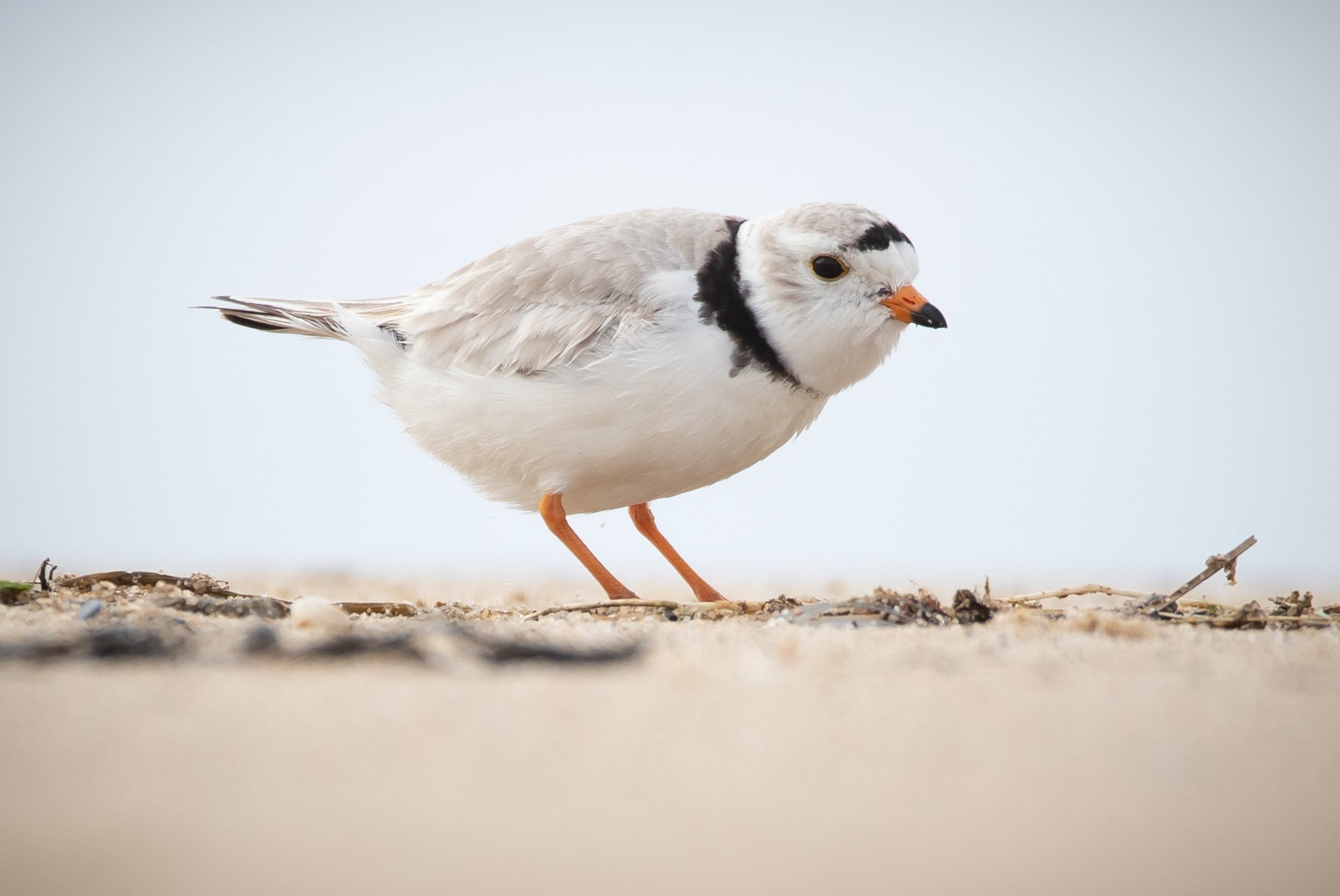
Beaches and Dunes
Florida's dune ecosystems are an important part of the state's coastal ecosystem. They are found along the Atlantic and Gulf coasts and are characterized by their sandy terrain and the vegetation that grows on them.
The sandy soil of Florida's dune ecosystems is often nutrient-poor, which makes it difficult for plants to grow. However, a number of specialized plants are adapted to this environment and thrive in the harsh conditions. These plants often have deep roots that help them to access water, and they are also adapted to survive the high winds and salt spray that are common in coastal areas.
Florida's dune ecosystems are also home to a variety of animals, including small mammals like mice and rabbits, as well as a number of bird species, such as ospreys, terns, and plovers. Sea turtles also use the dunes as nesting sites, and the hatching of their eggs is an important part of the dune ecosystem.
Florida's dune ecosystems face a number of threats, including erosion, pollution, and habitat destruction. Coastal development, beach renourishment projects, and recreational activities like off-road vehicle use can all have a negative impact on these fragile ecosystems. Conservation efforts, such as the creation of protected areas and the restoration of damaged dune systems, are critical to preserving these important coastal ecosystems and the many species that depend on them.
Dune Zones
Dunes are created by the interaction of wind, sand, and coastal vegetation. The primary source of sand for dunes is the beach itself, as wind transports sand from the beach to the backshore area. When the sand encounters obstacles like vegetation, it gets trapped and accumulates, gradually forming dunes. Over time, these dunes stabilize and grow in height as more sand is deposited.
Florida's dune system can be divided into several distinct zones based on their proximity to the shoreline:
Foredune: The foredune is the closest dune to the beach and is often subject to direct wave action during storms. It is typically the lowest and most fragile dune, often covered in sparse vegetation that can tolerate salt spray and shifting sands.
Secondary Dune: Located just inland from the foredune, the secondary dune is slightly higher and more stabilized. This area supports a greater variety of vegetation, including more robust plants that play a crucial role in stabilizing the dunes.
Tertiary Dune and Backdune: These are further inland and tend to have the highest elevation. The vegetation in these areas is more established and helps hold the dune structure in place. The backdune area is often the most stable and acts as a buffer against storm surges and erosion.
Dune Vegetation
Dune vegetation is specially adapted to withstand the challenging conditions of the coastal environment, including salt spray, shifting sands, and nutrient-poor soil. Some common dune plants in Florida include:
Sea Oats (Uniola paniculata): Perhaps the most iconic dune plant, sea oats have extensive root systems that help stabilize dunes. Their tall, feathery seed heads trap blowing sand, promoting dune growth.
Beach Grasses: Various species of beach grasses, such as American beachgrass (Ammophila breviligulata), help anchor sand and prevent erosion with their dense root systems.
Dune Sunflowers (Helianthus debilis): These bright yellow flowers have deep roots that help bind the sand and contribute to dune stability.
Seabeach Amaranth (Amaranthus pumilus): Seabeach amaranth is a critical dune plant that helps stabilize sand and prevent erosion due to its deep-rooted nature. Its dense growth provides habitat and protection for other dune organisms. It also plays a role in the nutrient cycle of coastal ecosystems.
Seaside Goldenrod (Solidago sempervirens): Seaside goldenrod is an essential dune plant that contributes to stabilizing dunes with its extensive root system. It helps bind the sand and provides a crucial habitat for pollinators, insects, and birds. The plant's vibrant yellow flowers also add to the aesthetic beauty of coastal areas.
Beach Evening Primrose (Camissoniopsis cheiranthifolia): Beach evening primrose is well-adapted to the harsh conditions of dunes and contributes to their stabilization. It serves as a habitat and food source for various insects and small mammals. The plant's attractive white to pale yellow flowers are an important element of coastal ecosystems.
Hudsonia species (Hudsonia spp.): Hudsonia species are low-growing shrubs that thrive in sandy habitats, including dunes. They play a role in stabilizing sand with their dense growth and root systems. These shrubs also provide habitat for insects and small animals and contribute to the overall biodiversity of dune ecosystems.
Eastern Baccharis (Baccharis halimifolia): Eastern baccharis, also known as groundsel bush, is a woody shrub that helps stabilize dunes with its root system and dense growth. It provides habitat and food for a range of wildlife, including birds and insects. Additionally, its flowers provide nectar for pollinators.
Sand Verbena (Abronia spp.): Sand verbena is a coastal plant that often grows on dunes and sandy shores. It helps prevent erosion by anchoring the sand with its roots. The plant's flowers provide nectar for pollinators and support the local ecosystem's biodiversity.
Panic Grass (Panicum spp.): Some species of panic grass are adapted to dune environments and contribute to sand stabilization. They provide habitat for insects, birds, and small mammals, and their seeds are an important food source for wildlife.
These endangered dune vegetation species are vital components of coastal ecosystems. Their presence helps maintain the integrity of dunes, prevent erosion, provide habitat for various organisms, support biodiversity, and contribute to the aesthetic appeal of coastal landscapes. Protecting and conserving these plants is crucial for maintaining the health and resilience of coastal environments in the face of ongoing environmental challenges.
Endangered Species Living in Dunes
Piping Plover
Roseate Tern
Green Sea Turtle
Red Knot
Gulf Sturgeon
Loggerhead Sea Turtle
Beach Mouse
Gopher Tortoise
Kemp's Ridleys Sea Turtle
Least Tern
Eastern Indigo Snake
Florida Sandhill Crane

















